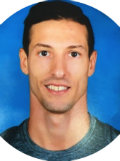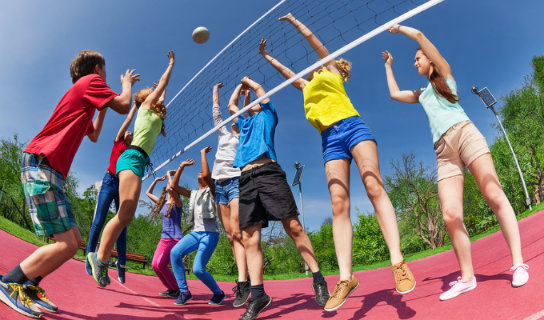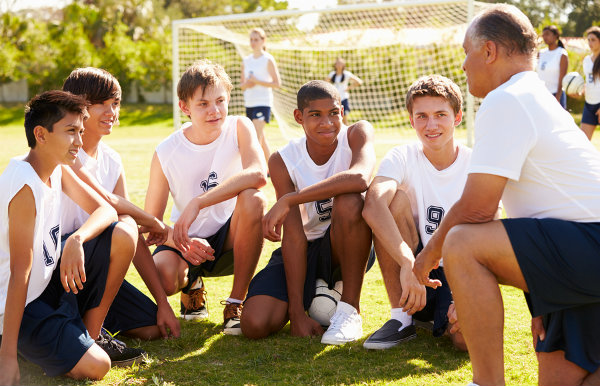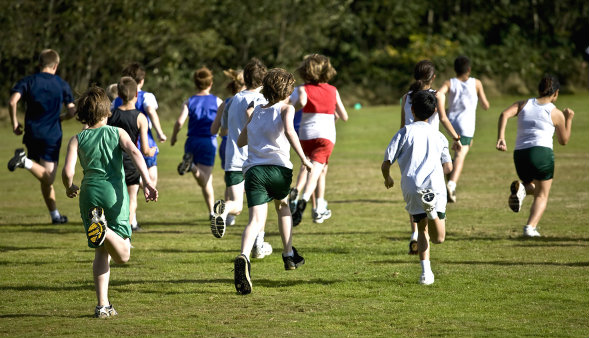Why Physical Literacy Matters for Our Students
 By Anthony De Giorgio
By Anthony De Giorgio
Let me first start out by saying that I love the concept of physical literacy.
I truly believe that if there were more people who saw the value in the journey to improving their physical literacy and took the necessary action to do so, we would have a fitter, happier and healthier society. And by healthy, I don’t only mean it in the physical sense. I mean it in the most holistic and integrative way possible.
But first, let’s define physical literacy. There are a number of definitions adopted by different organizations across the world, but I tend to gravitate more towards the original one coined by Margaret Whitehead, who is a leading researcher in the field of Physical Literacy and is credited with helping the concept go mainstream.
Her definition is also used by the International Physical Literacy Association:
“Physical literacy is the motivation, confidence, physical competence, knowledge and understanding to value and take responsibility for engagement in physical activities for life.”
Some of you may be thinking: why does this matter? Physical literacy can be seen as a foundational pillar in the quest for an individual to be active for life. We can discuss the numerous physical benefits that being active for life have; however, this definition transcends solely the physical well being of an individual and encompasses so many other aspects of health that we do not consider when we think of it.
Obviously, it is still important to have confident children and youth who can enjoy themselves across a broad range of sports, physical activities and movement experiences. This will allow them to get their daily recommended amount of moderate to vigorous physical activity which, in the ever evolving sedentary lifestyle we find ourselves, is paramount to their health.
However, when we break this definition down into its smaller parts, we see that there are a number of elements at play that go far beyond just the physical.
A whole child approach to health
As an educator, I have a very hard time disassociating a student’s physical self from their cognitive or affective self. I educate the whole child; that means considering their growth and development across all of the different domains of health.
Their mental and socio-emotional health have just as much importance as their physical, and this is where the journey of physical literacy can play a fundamental role in shaping the life they go on to live.
The first two words of the definition – motivation and confidence – are part of a child’s affective domain and have a critical impact on their attitude towards physical activity and exercise.
Motivation and confidence are where many of our students struggle during their school years, often leading them to drop out of PE class at the earliest chance possible.
This is where many of our students struggle during their school years, leading them to drop out of PE class at the earliest chance possible. Neglecting of this aspect of physical literacy can have long term implications that become unhealthy lifestyle habits in the future.
Supporting our students to develop their physical literacy
So, how can we as physical educators support our students on their journey to developing their physical literacy? Here are some points for reflection:
► Individuality – For starters, we must respect the fact that each child’s path will be unique. This is especially important in the early years, where the relationship that they develop with movement and physical activity often sets the tone for their future.
► Variety – Exposing students to different types of movements, activities and sports in a fun and engaging way helps to develop positive associations that stick with them as they grow up. Having variety in a PE program while still providing opportunity to play the ‘classic’ sports and activities allows for all learners to explore their development.
► Exploration – Equipping our students with the knowledge and understanding about the ‘why’ and ‘how’ is important, but is also necessary to provide the environment that allows them to explore it for themselves. This means a more student-centered approach to PE classes. Activities that help students build autonomy as learners and develop internal feedback cues such as self correction and self regulation should play a main role in teaching and learning process.
As teachers, coaches and recreation workers, we obviously have to have the necessary professional knowledge to understand how to teach and develop these fundamental movement skills in our youth. However, we must make sure that the way we engage with them takes into account the many factors that affect their mindset.
By putting students first and giving them ownership of learning, we can help them empower themselves, instilling a sense of intrinsic motivation that will allow them to succeed in their respective sport and/or continue to be active for life. It is these types of experiences, whether in PE class or in other sport/physical activity settings, where students begin to develop skills that will not only support them in the task at hand, but can be applied to their daily lives.
The effect that these life skills can also have on learning is something that we are only now starting to pick up on in the education world. If we, as physical educators, can help other teachers see themselves an integral part of a student’s physical literacy development, we could have an even bigger impact on them.
Beyond the skills and rules of sports
In closing, the concept of physical literacy is not one that we can accurately gauge on a checklist that we complete and then move on to the next phase. Physical literacy is a journey for each student that will have its challenges, obstacles and achievements along the way.
The non-stop pursuit of improvement in our own human performance allows us to connect to social groups, create behavioral changes that go far beyond the PE classroom, and develop a sense of confidence that they will not only have in their play space but also across many different activities and experiences in their lives.
It is not the skills or rules of sports that our students will remember from our teaching, but rather the environment and experiences that we provided as teachers that allowed them to not only learn, but to also have fun and be a kid.
________________________________
International teacher Anthony De Giorgio(@adegiorgioPE) has his home base in Toronto, Canada. He spent the past five years teaching Physical and Health Education in Kuwait and The Bahamas. This year he’s enrolled in graduate school to pursue a Masters in Professional Kinesiology and plans on returning to the classroom in the 2019-20 school year. He is also a PHE workshop leader for the International Baccalaureate program and a CrossFit Trainer and Coach.
The IB Physical and Health Education Program is a holistic framework that challenges students to develop not only their physical skills, but also their knowledge and understanding of the complexities of what it means to be “healthy.” By practicing skills such as refinement, self-management, planning and reflection on an ongoing basis, students develop not only the physical capacity to be lifelong movers, but also the attitude and motivation to take action in their own lives.






































Thanks for writing this. Now that I have a very active child, I am thinking about physical literacy a lot more!